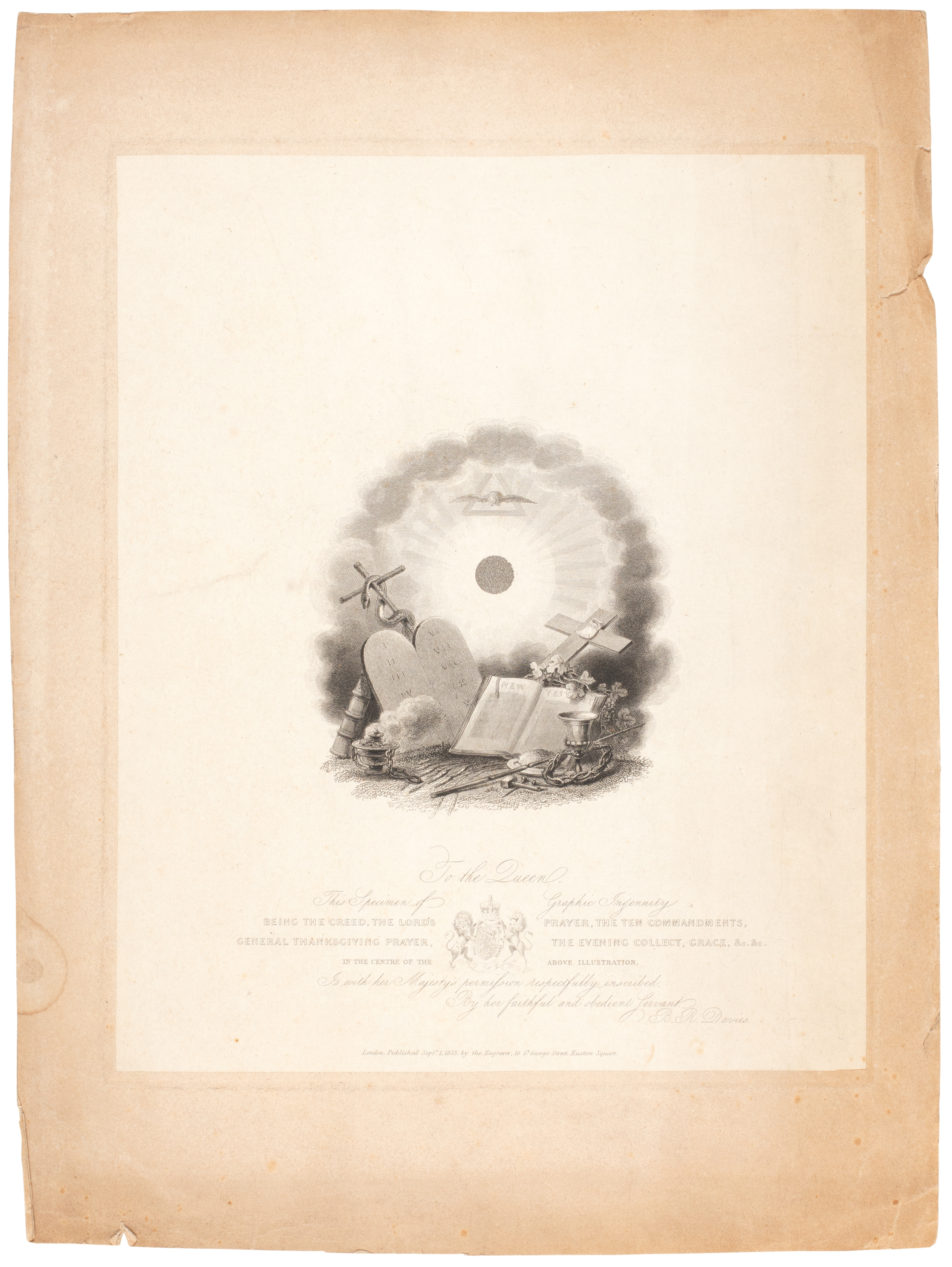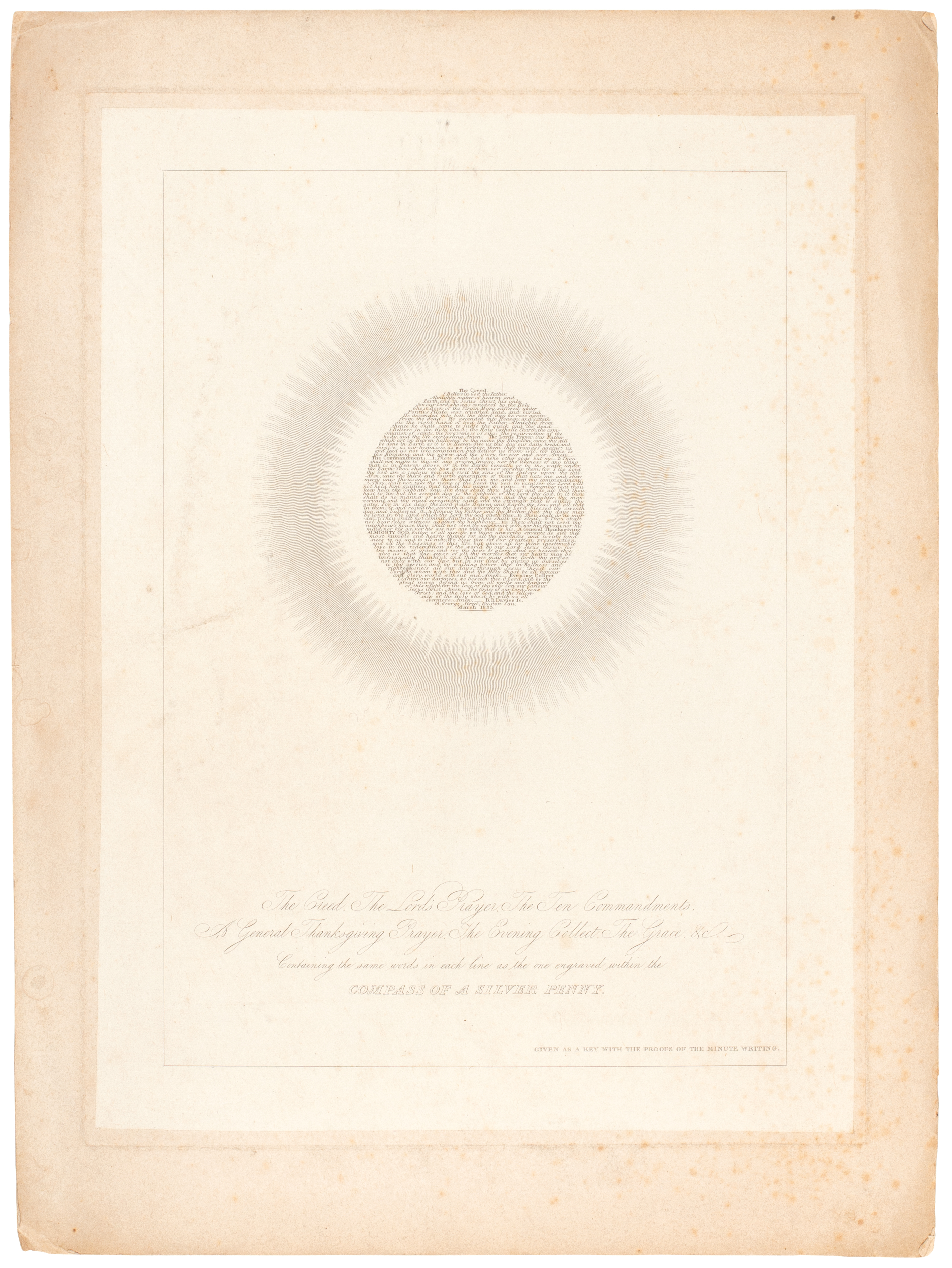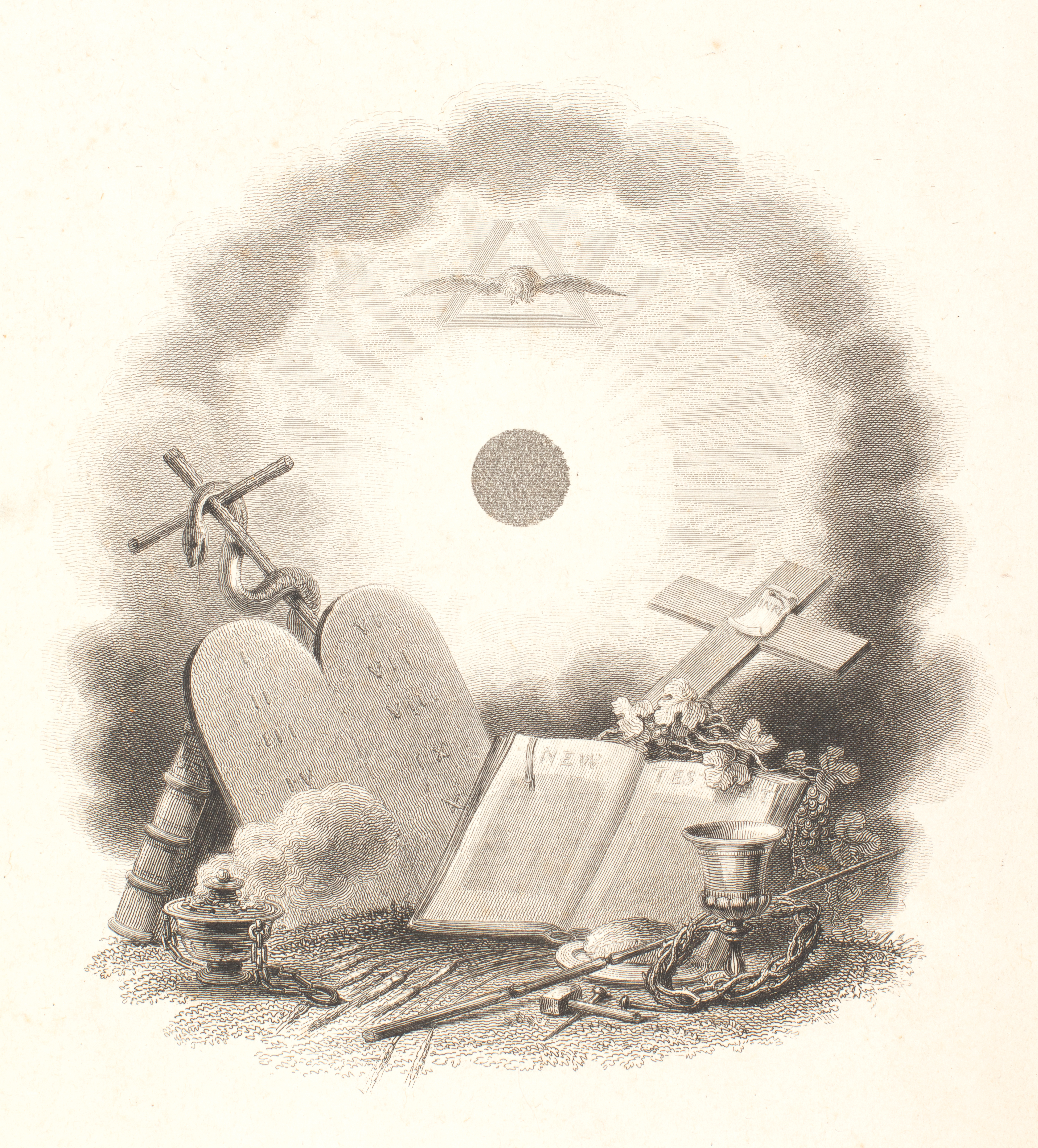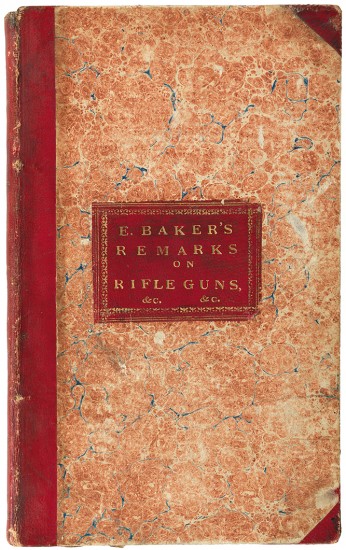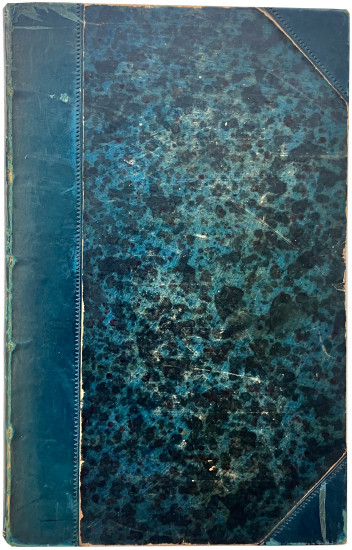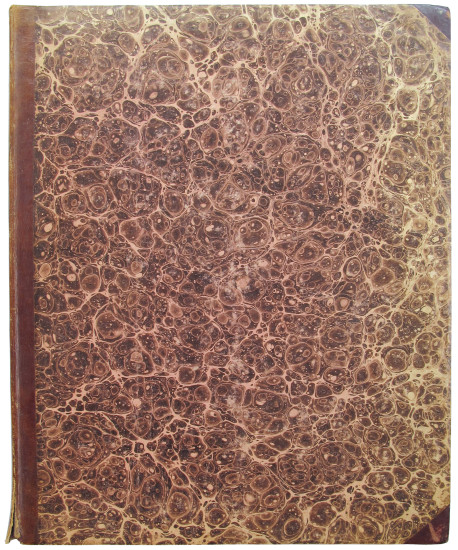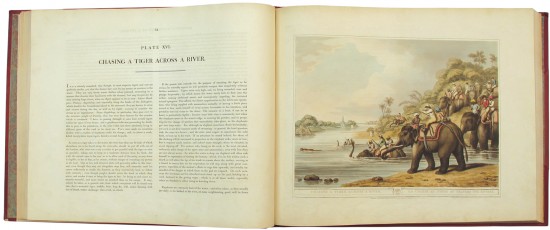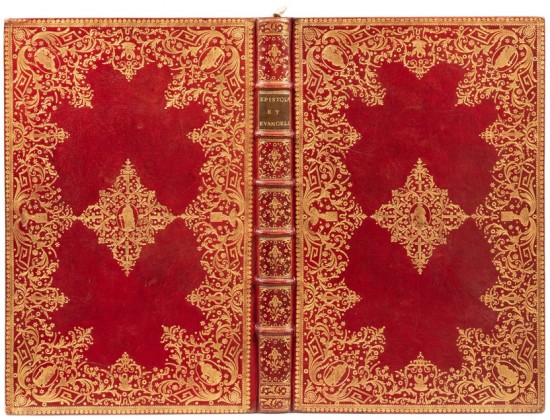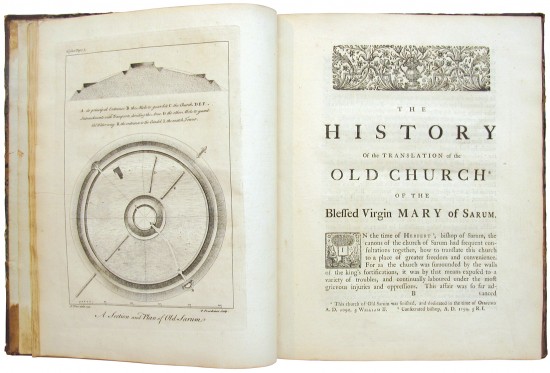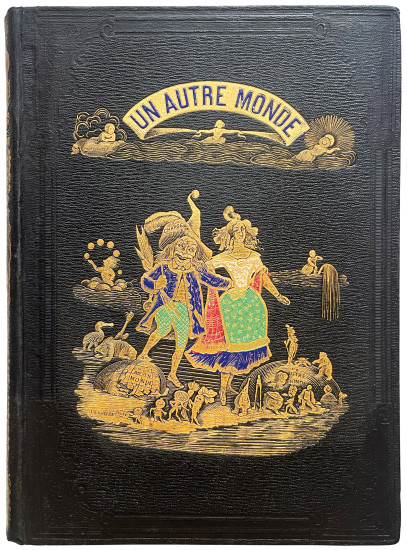To the Queen: This Specimen of Graphic Ingenuity Being the Creed, the Lord's Prayer, the Ten Commandments... &c
Davies, Benjamin Rees
London. Published ... by the Engraver (B[enjamin]. R[ees]. Davies). 1833
A stunning example of early miniature printing with the 'Creed, the Lord's Prayer' etc. engraved and printed to the size of an early nineteenth-century silver penny together with the additional key plate.
The first engraving, a remarkable and inventive tour-de-force of steel engraving, features a central engraved circle which when examined closely proves to be text. Surrounded by clouds or smoke and emanating rays of light, with a dove above and suitably religious imagery beneath (a crucifix, Moses' tablets, an incense burner, a grail, crown of thorns, hammer and nails, a serpent and so on), the text proves to be - as the explanatory legend beneath indicates - the 'Creed, the Lord's Prayer, the Ten Commandments, General Thanksgiving Prayer, the Evening Collect, Grace, &c. &c.
The second engraving, a larger central circular section of text surrounded by emanating rays, provides a transcription of the text of the first: 'Containing the same words in each line as the one engraved within the compass of a silver penny'. As noted beneath, this second engraving is 'given as a key with the proofs of the minute writing'.
Dedicated by the engraver Davies 'to the Queen' (i.e. William IV's Queen, Adelaide of Saxe-Meiningen), it seems likely that Davies sought Royal patronage for his work as a printer. Known in particular as a printer and publisher, in particular of maps, Davies was an early adopter of steel engraving, a technique that allowed particularly fine and detailed engraving due to the hardness of the surface of the plate. Miniature engraving, in particular of religious texts, developed as a method for the display of the skill of the engraver. This example, the engraving as per the key plate was completed in March 1833, was executed at an early date and is both particularly fine and exceptionally ambitious; other undertakings are larger or feature the Lord's Prayer or the Ten Commandments only.
The first engraving, a remarkable and inventive tour-de-force of steel engraving, features a central engraved circle which when examined closely proves to be text. Surrounded by clouds or smoke and emanating rays of light, with a dove above and suitably religious imagery beneath (a crucifix, Moses' tablets, an incense burner, a grail, crown of thorns, hammer and nails, a serpent and so on), the text proves to be - as the explanatory legend beneath indicates - the 'Creed, the Lord's Prayer, the Ten Commandments, General Thanksgiving Prayer, the Evening Collect, Grace, &c. &c.
The second engraving, a larger central circular section of text surrounded by emanating rays, provides a transcription of the text of the first: 'Containing the same words in each line as the one engraved within the compass of a silver penny'. As noted beneath, this second engraving is 'given as a key with the proofs of the minute writing'.
Dedicated by the engraver Davies 'to the Queen' (i.e. William IV's Queen, Adelaide of Saxe-Meiningen), it seems likely that Davies sought Royal patronage for his work as a printer. Known in particular as a printer and publisher, in particular of maps, Davies was an early adopter of steel engraving, a technique that allowed particularly fine and detailed engraving due to the hardness of the surface of the plate. Miniature engraving, in particular of religious texts, developed as a method for the display of the skill of the engraver. This example, the engraving as per the key plate was completed in March 1833, was executed at an early date and is both particularly fine and exceptionally ambitious; other undertakings are larger or feature the Lord's Prayer or the Ten Commandments only.
[2 leaves]. Folio. (295 x 197 mm). Steel engravings on laid India paper recto only, dedication, title, explanatory text &c. at foot of each.
#48623
